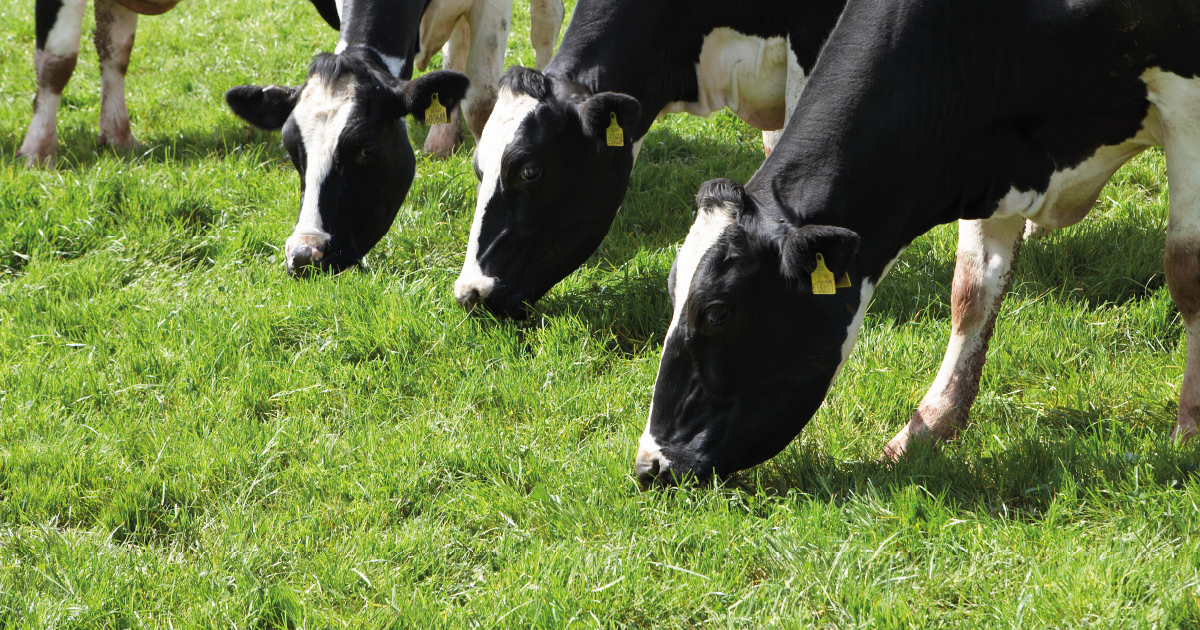Rearing heifers are a sizeable investment to a dairy enterprise, with rearing costs not being recouped until the cow reaches their second lactation. Studies carried out by AHDB show that on average 17% of milking heifers exit the herd before their second lactation (AHDB, 2023).
Read more
Posted in Dairy Farming, Dairy Housing, Dairy Feed, Dairy Hygiene, Calf & Youngstock, Calf Feeding, Calf Housing, Calf Health and Calf Profit & Management
The past eighteen months in the dairy sector have been a rollercoaster, featuring unprecedented volatility in milk prices and significant fluctuations in the costs of feed, fuel, and fertiliser.
In an ever-evolving dairy sector, understanding the latest market trends and strategies is paramount.
In season three, episode eight of the Wynnstay Agri-Hub podcast, agricultural journalist, market analyst and business advisor Chris Walkland, gives insight into the issues and opportunities shaping the dairy industry today.
Read more
Posted in Dairy Farming, Dairy Housing, Dairy Feed, Dairy Hygiene and Environment & Sustainability
Good ventilation systems are essential to reduce respiratory disease in the first months of a calf’s life.
It is estimated that the cost of pneumonia per sick calf is £42.26, with an additional cost of £29.58 per calf for the in-contact group. In turn, this reduces feed efficiency, growth rates, organ development, future milk production and an increased mortality risk before calving.
Read more
Posted in Dairy Feed, Calf & Youngstock, Calf Housing and Calf Health
Alongside nine project partners, Wynnstay is pleased to be involved in the Innovate UK project ‘Dancing with daffodils’, which focuses on cultivating and processing daffodils.
Research is being undertaken to identify the potential of the incorporation of a compound found in daffodils into ruminant diets to reduce methane emissions and improve protein utilisation.
In season three, episode six of the Wynnstay Agri-Hub Podcast Alison Bond, Technical Services Manager at Rumenco and Andrew Evans, first-generation dairy farmer and Group Sustainability, Innovation and Food Supply Chain Director at Wynnstay, tell us more about the project and what it means for the industry.
Read more
Posted in Dairy Farming, Dairy Feed and Environment & Sustainability
With huge scope to maximise productivity from forage, Wynnstay has launched a new Forage4Profit campaign, which is designed to support farmers to improve meat or milk from forage.
The 2022 Kingshay report indicates that the average milk from forage on UK dairy farms is 2,900 litres, showcasing that there is huge scope for improvement, with some of the best farms reaching over 5,000 litres.
Read more
Posted in Dairy Farming, Beef Farming, Sheep Farming, Dairy Feed, Beef Feed, Grass Seed and Silage Advice
For the last few years, the industry has been advising grass silage producers to cut little and often to maximise the energy and protein yield form their silage ground.
Read more
Posted in Dairy Farming and Dairy Feed
A dry cow is a cow that is pregnant and is not lactating. They are typically fed a diet that is lower in energy and protein than a lactating cow, but higher in fiber. The goal of feeding a dry cow is to ensure a smooth, stress free calving, maximise feed intake, condition the rumen bugs to what they will experience in lactation and to prepare her for future milk production.
Read more
Posted in Dairy Farming and Dairy Feed
Milk fever, also known as hypocalcemia, is a metabolic disorder in dairy cows that occurs when the blood calcium level drops too low. It is a serious condition that can be fatal if not treated promptly.
Read more
Posted in Dairy Farming and Dairy Feed
Forage4Profit is a 4-point plan to help livestock farmers maximise the quality of homegrown forage and improve milk or meat from forage.
In this blog we look at the 4 factors to help improve milk from forage this season.
The amount of milk produced from forage averages just 2,900 litres nationally, figures from Kingshay’s cost report from December 2022 show. There is huge scope to improve this and reduce purchased feed costs, with the best farms achieving 5,300 litres of milk from forage.
Every 1,000 litres of milk from forage equates to approximately 460kg of concentrate feed, and so by increasing homegrown forage quality, it's essential to maximise homegrown to make the most efficient use of purchased feed.
Read more
Posted in Dairy Farming, Beef Farming, Sheep Farming, Dairy Feed and Beef Feed
Although minerals only account for about 5% of total ruminant nutrition they have a disproportionate role in supporting energy and protein yielding nutrients required to maintain animal health, fertility and production.
Read more
Posted in Dairy Farming, Beef Farming, Sheep Farming, Dairy Feed and Minerals










